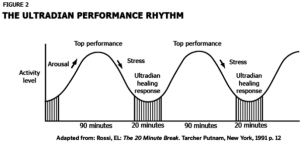How to Identify Your Peak Productivity Hours and be more Productive?
Have you ever wondered - what time of day am I most productive? Or have you ever asked yourself by the end of the day – What did I accomplish today? .
It is not uncommon that productivity hours and energy levels vary from person to person and is not consistent throughout the day. Some of us are ‘night owls’ who stay up and work until late night whereas some are ‘morning larks’ – whose most productive work hours are early hours of the day.
Having a clear understanding of your peak productivity hours and matching priority tasks appropriately will help you see difference in your performance level. Here we’ll share simple ideas on how to identify your peak productivity hours of the day.
Take a methodical approach:
Rather than following your gut feeling, taking a methodical approach will help you with an optimal result in identifying your peak productivity hours.
Follow the Ultradian performance cycle:
By design our body is set to work in cycles and schedules. We must listen to these natural cycles and carefully follow them in order to stay healthy as well as stay productive. This is exactly what the body of research on Ultradian performance rhythm suggests – featuring a 90-minute period of high frequency brain activity followed by a 20-minute period of low frequency brain activity.

On the above image, the 90 minute is the period of high frequency brain activity considered as the most productive work hours of the day. Then comes the period of low frequency brain activity where your body will require you to go through the healing process before you resume with your day to day activities. The study suggests that you use your peak productivity hours to complete projects that need careful attention and dedication. Routine tasks or less important tasks can be completed during the period of low frequency or you can take a break before expecting your next energy surge.
Keep a journal of your activity logs:
Keeping a record of your daily activity is a pragmatic way to understand whether or not you are investing your time on tasks that meet business objectives. Activity logs serves as an eye-opener in identifying your peak productivity hours and help you assign high-priority tasks to the right time of the day.
For instance, you might spend far more time than you think on breaks or surfing social media sites. When you observe daily activities you will know how much time you spend on individual activity/tasks – based on which you can change the way that you work or stop wasting time on activities that don’t contribute to your success
You can achieve this by writing down and documenting key metrics such as;
- Start time of a task
- End time of a task
- How long you are able to maintain focus on a particular task
- How often you get distracted from work
- When are you raring to go for a break?
You can do this for a week/month or so; once you’ve gathered enough data, analyze your work pattern and the duration where you were able to maintain focus for a prolonged period of time. Based on this, you can identify your peak productivity hours and utilize them to complete important projects that need accurate decision making or critical thinking.
Observe your energy level:
Most of us follow a steady daily cycle – waking up in the morning, working from 9 to 5 and spending evenings at leisure. As a fact, we are expected to stay awake and productive especially during business hours. But, on the contrary many of us experience a low-energy level that leads to disruption in workflow, lack of motivation and decreased productivity. Rather when you observe and work in synchrony with your energy level, you’ll soon realize how your work flow improves and you are able to get more done at a sensible time.
You can try doing the following to understand your energy level and to identify peak productivity hours;
- Observe your energy levels throughout the day
- Note down your high-energy and low-energy times in a day with duration
- Try to balance your energy level and plan your day accordingly
By this way, you can assign important tasks to areas where you show high energy level and move routine or less priority tasks to areas with lower energy.
Make use of time tracking software:
Running out of time on tight deadline happens due to ineffective time management. More than often, you might find yourself taking longer breaks or staying idle/in-active for an extended period of time. To overcome this, you can install time tracking software capable of tracking your productive, neutral, idle hours and deliver you with detailed analytical productivity reports - which you can utilize for further evaluation.
Based on the analysis, you (your employees) can take ownership of the workload and see in real-time how quickly you are able to complete a task compared to the previous day.
If you are looking to identify your peak productivity hours (or your team’s productivity hours), try implementing Handdy employee monitoring software and see how you can effectively utilize your time or get more done within the set period of time.
Make use of
Your FREE Demo
Stop wasting time on trying out different employee monitoring tools. Find out how you can utilize Handdy to manage your employees.
Book Your Free Demo HereWe're here to help
Would you like a free personalised demo to learn how you can use Handdy at your company?
Book your free demo now